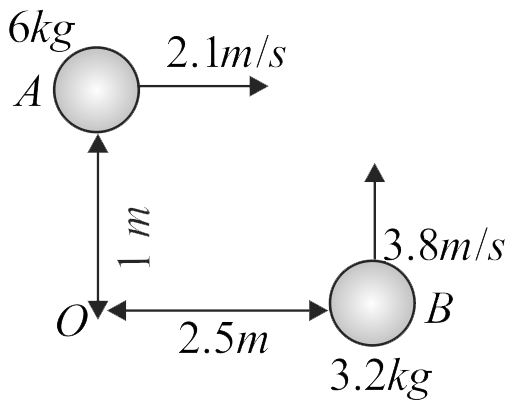366164
A projectile of mass \(m\) is launched with an initial velocity \(u\) making an angle \(\theta\) with the horizontal as shown in the figure. The projectile moves in the gravitational field of the Earth. The angular momentum of the projectile about the origin when it is at the highest point of its trajectory is
366164
A projectile of mass \(m\) is launched with an initial velocity \(u\) making an angle \(\theta\) with the horizontal as shown in the figure. The projectile moves in the gravitational field of the Earth. The angular momentum of the projectile about the origin when it is at the highest point of its trajectory is
366164
A projectile of mass \(m\) is launched with an initial velocity \(u\) making an angle \(\theta\) with the horizontal as shown in the figure. The projectile moves in the gravitational field of the Earth. The angular momentum of the projectile about the origin when it is at the highest point of its trajectory is
366164
A projectile of mass \(m\) is launched with an initial velocity \(u\) making an angle \(\theta\) with the horizontal as shown in the figure. The projectile moves in the gravitational field of the Earth. The angular momentum of the projectile about the origin when it is at the highest point of its trajectory is
366164
A projectile of mass \(m\) is launched with an initial velocity \(u\) making an angle \(\theta\) with the horizontal as shown in the figure. The projectile moves in the gravitational field of the Earth. The angular momentum of the projectile about the origin when it is at the highest point of its trajectory is


